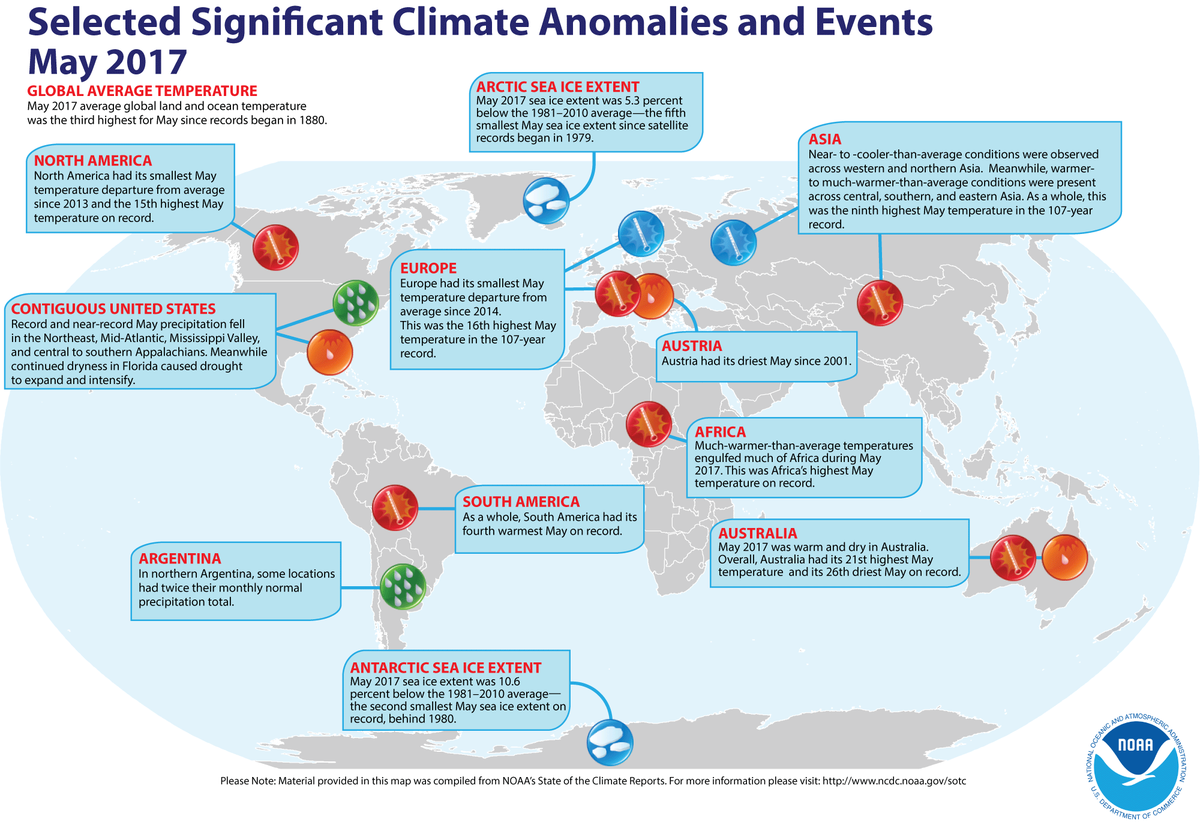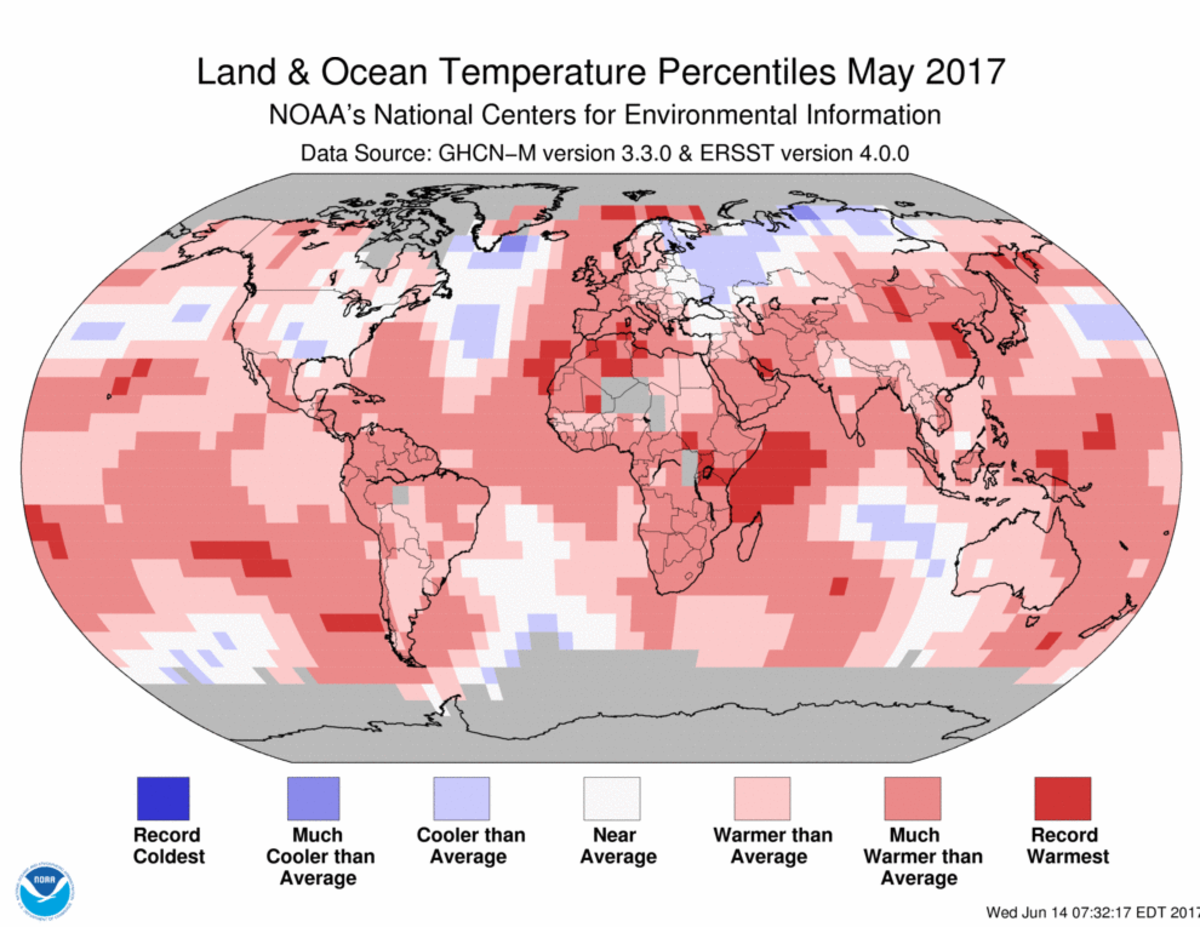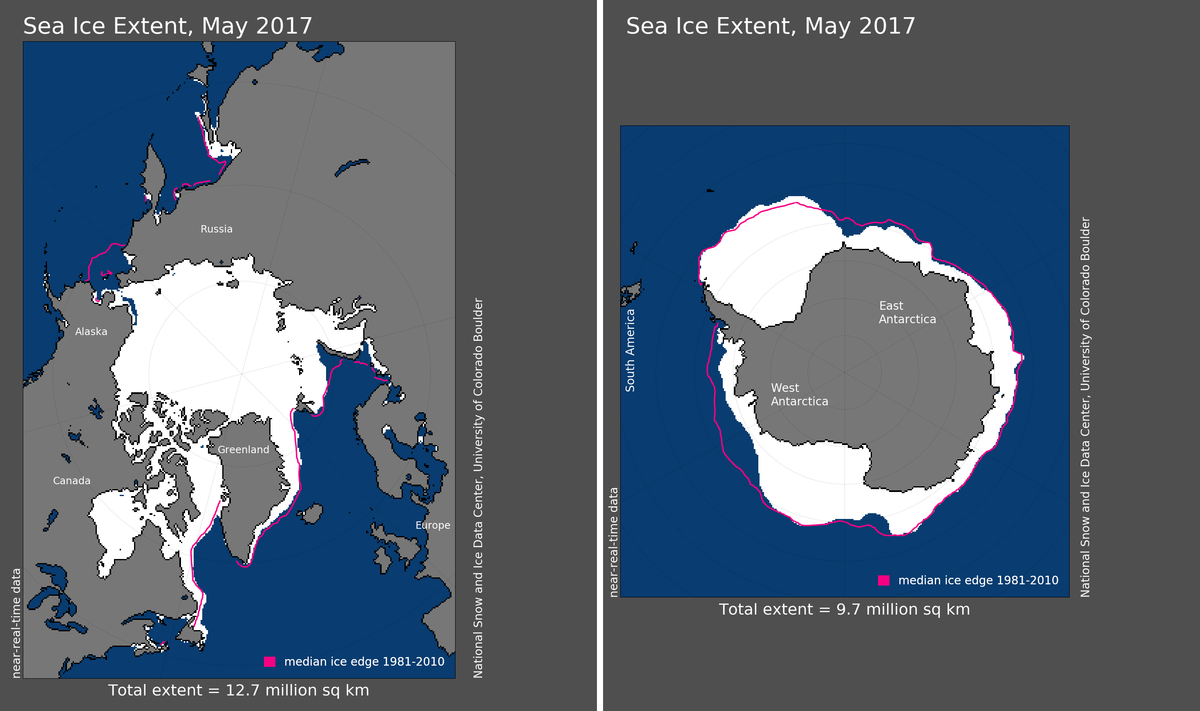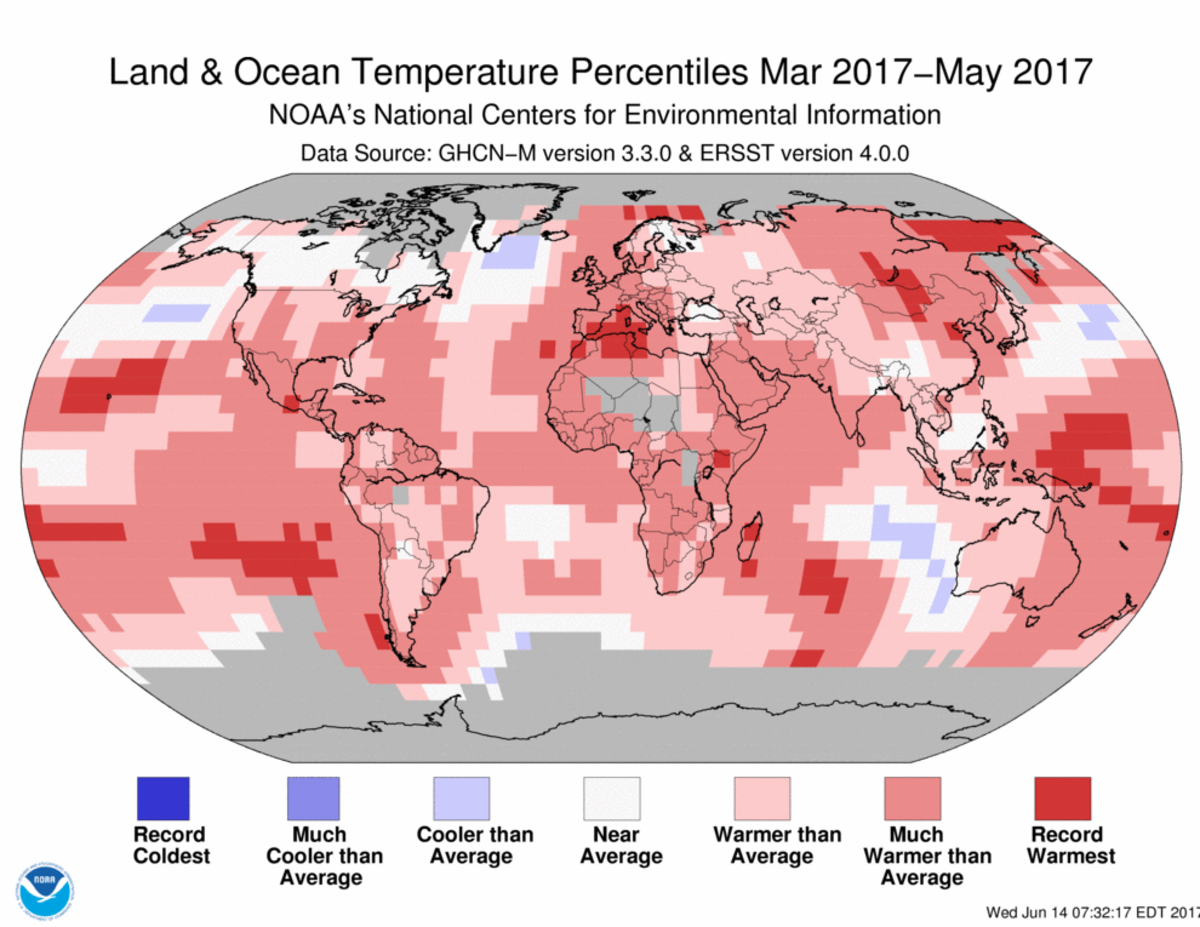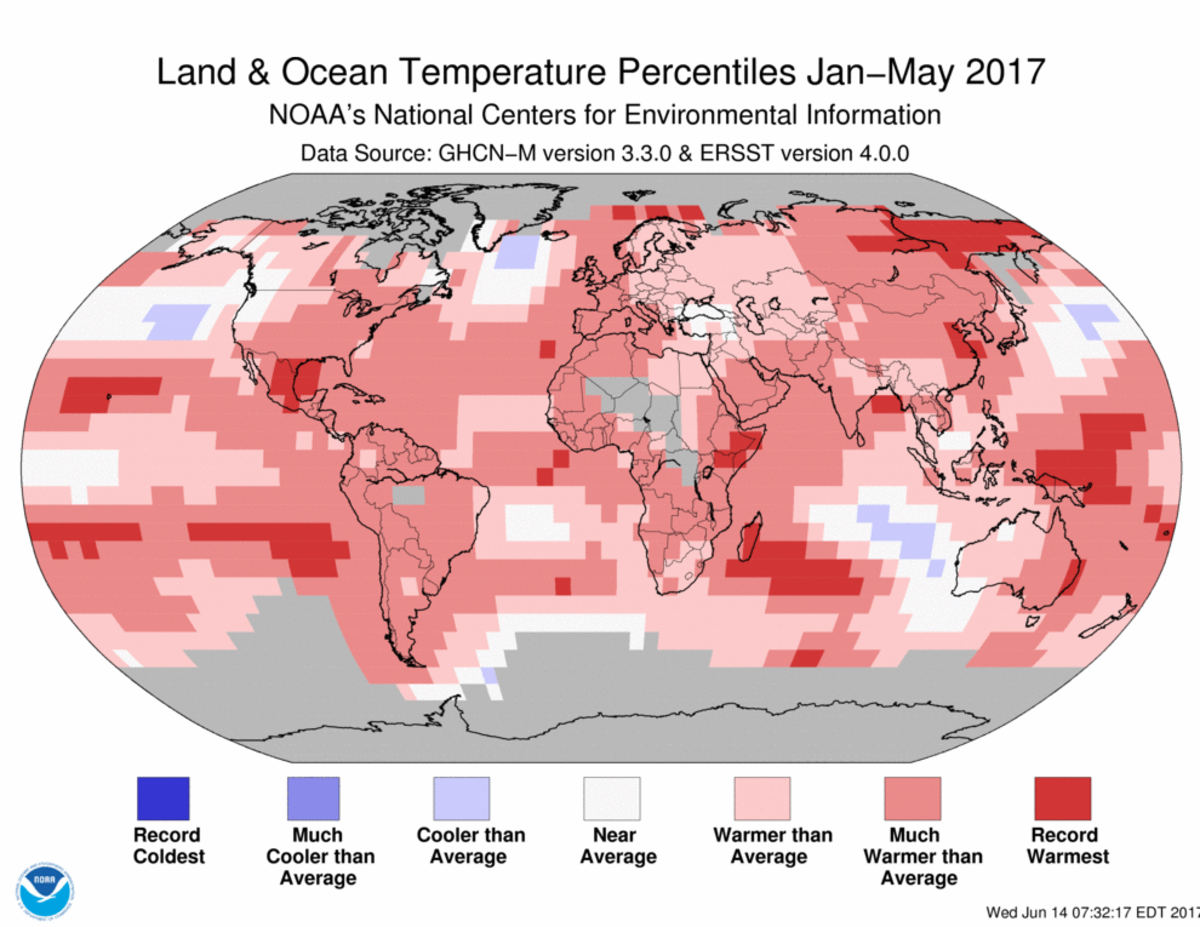Earth had its second warmest year to date and third warmest May on record

The globally averaged temperature over land and ocean surfaces for May 2017 was the third highest for the month of May in the NOAA global temperature dataset record, which dates back to 1880. The March–May seasonal and year-to-date global temperatures were second warmest in the 138-year record.
This monthly summary is part of the suite of climate services NOAA provides to government, business, academia, and the public to support informed decision-making.
May Temperature
The May temperature across global land and ocean surfaces was 1.49°F above the 20th century average of 58.6°F. This was the third highest for May in the 1880-2017 record, behind 2016 and 2015. This was also the smallest monthlyMay temperature departure from average since December 2016.
The May globally averaged land surface temperature was 2.07°F above the 20th century average of 52.0°F. This value was the smallest May land global temperature departure from average since 2011 and the seventh highest May land global temperature in the 138-year record.
The May globally averaged sea surface temperature was 1.28°F above the 20th century monthly average of 61.3°F—the third highest global ocean temperature for May in the record, behind 2016 and 2015.
May Snow Cover and Sea Ice
According to data from NOAA analyzed by the Rutgers Global Snow Lab, the Northern Hemisphere snow cover extent during May was 9.0 percent above the 1981–2010 average. This was the 12th largest May Northern Hemisphere snow cover extent in the 51-year period of record. The North American snow cover extent was the 18th largest on record, while the Eurasian snow cover extent was the 12th largest.
The average Arctic sea ice extent for May was 274,000 square miles (5.3 percent) below the 1981–2010 average. This was the fifth smallest May sea ice extent since records began in 1979, according to an analysis by the National Snow and Ice Data Center based on data from NOAA and NASA.
The Antarctic sea ice extent for May was 440,000 square miles (10.6 percent) below the 1981–2010 average. This was the second smallest May Antarctic sea ice extent since records began in 1979 and 80,000 square miles larger than the record smallest extent set in 1980 (360,000 square miles).
Seasonal (March–May)
The March–May average temperature across global land and ocean surfaces was 1.66°F above the 20th century average of 56.7°F. This was the second highest for March–May in the 1880-2017 record, trailing the record year 2016.
The globally averaged land surface temperature for March–May 2017 was 2.65°F above the 20th century average of 46.4°F. This was also the second highest for March–May in the 138-year record, behind 2016.
The March–May globally averaged sea surface temperature was 1.30°F above the 20th century average of 61.0°F—also the second highest for March–May in the record, behind the record set during 2016.
Year-to-date (January–May)
The year-to-date temperature across global land and ocean surfaces was 1.66°F above the 20th century average of 55.5°F. This was the second highest for January–May in the 1880–2017 record, behind 2016.
The year-to-date globally averaged land surface temperature was 2.77°F above the 20th century average of 42.8°F. This was also the second highest for January–May in the record, behind 2016.
The year-to-date globally averaged sea surface temperature was 1.26°F above the 20th century average of 60.8°F. This was the second highest for January–May in the 138-year record, behind the record year 2016.
For a more complete summary of climate conditions and events, see our May 2017 Global Climate Report.

